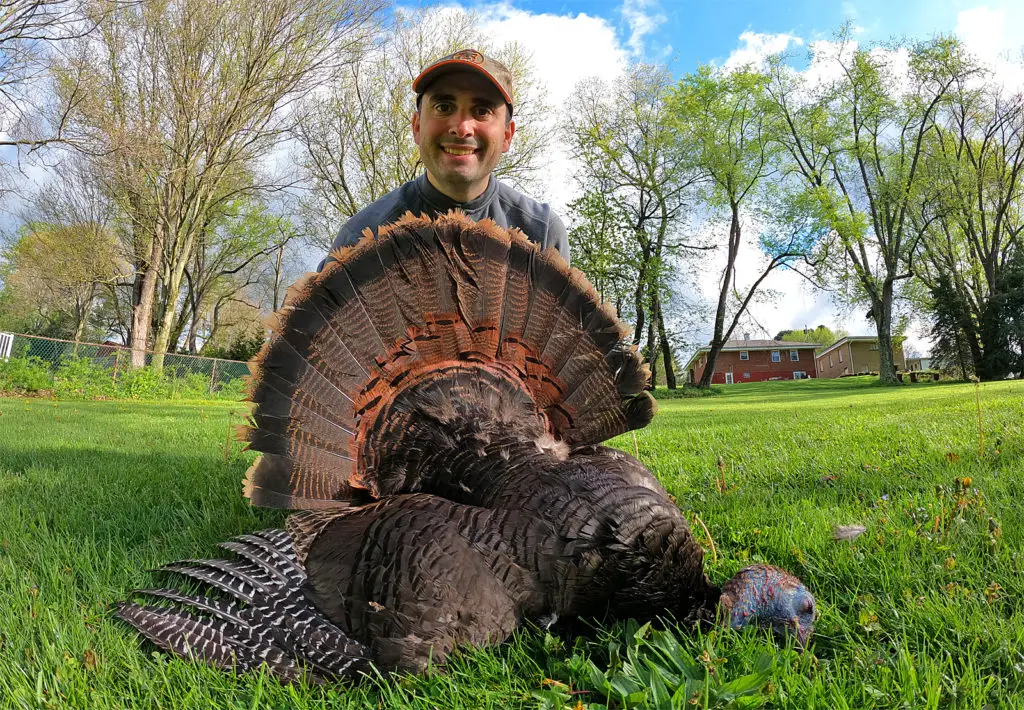It is time to re-evaluate a lot of media and marketing driven propaganda to find the simple truth behind turkey hunting chokes and strategy. So many lies, half-truths, and half-baked ideas have filled the internet and turkey hunting culture about what a good choke tube, pattern, and ideal distance is, that many have forgotten the reality of what usually happens in a turkey hunt. In this episode I interview Jimmy Muller from Muller Chokes.
You can find Jimmy’s chokes at MullerChokes.com
Turkey hunters are taught from early on that the best possible pattern in the tightest possible pattern. This does two main things, it gives you the longest possible maximum range, and reduces the chance of putting pellets in the breast meat. We are told that tighter patterns mean we take more birds. But what if there was more to the story than this? What if this line of turkey hunting doctrine was nothing more than a heavily marketing induced fallacy? What if tighter patterns and increased range actually resulted in taking fewer total birds?
While it seems like a good idea to be able to shoot out to 60 yards, the truth is most turkeys are shot within 30 yards. And an ideal pattern at 60 yards is a very bad pattern at 15-30 yards. Only rarely does the average turkey hunter take a bird at extended range. So to be able to boost the odds of getting that occasional bird, we are damaging our odds at taking all other birds.
You see to put 400 pellets in a 10″ circle at 50 yards, our pattern has to be very tight, similar to a baseball at 20 yards. A pattern that tight makes it very difficult to hit a turkey at close range. Any off variable can cause a miss, from sitting at an angle when you mount your shotgun to the turkey moving or gobbling. Many turkeys are missed at close range because the choke and ammo selection is optimized for maximum range.
Also, you do not need 400 pellets of TSS in a 10″ at 50 yards. That is a waste of pattern potential. You only need 100 pellets in that circle to do the maximum among of damage needed. Significantly more than that is waste. You would be better off with a bigger pattern giving more margin of error at all ranges. Of course, that leads to moans and groans from turkey hunters who are concerned about getting stray pellets in the breast meat.
Consider this, those hunting ducks, geese, pheasants, doves, and just about all other birds routinely put pellets in the breast meat and do not think anything of it. Why is the turkey the one game bird where such a thing is viewed as sacrilege? Why not just remove the pellets, assuming they do not travel all the way through the meat and out the back of the turkey as many modern TSS loads do. Why are people so concerned about getting a pellet in the breast meat?
In short, this is TV driven, and marketing propaganda. At 25 yards, target loads with a modified choke are just as effective at taking a turkey, maybe even more so, than TSS with a tight turkey choke. I am not opposed to TSS ammo, but I am opposed to hurting the odds of taking birds at normal ranges due to over choking for ranges that turkeys are rarely shot at. Why risk missing 5 birds out of 10 to get a better shot at 1 bird out of 10?
In this episode I talk with Jimmy Muller in depth about these issues and what turkey hunters can do in order maximize their changes to take turkeys at all range.
Here is the video I mentioned in this podcast episode:

